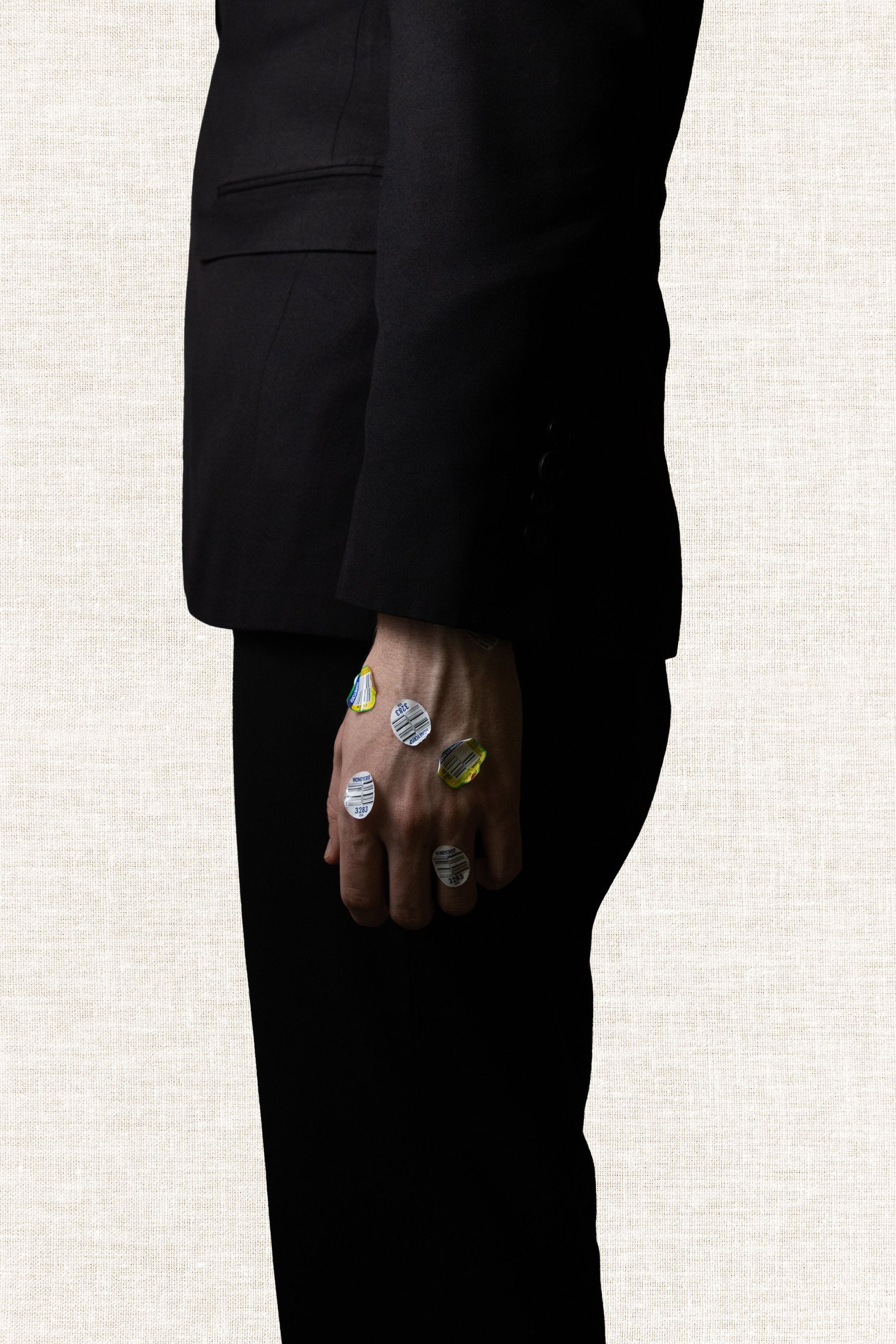A Taste of The Invisible
For my final project in my conceptual photography course, I wanted to visualize the ramifications of generative AI - exploring what we stand to gain and lose as artists.
My series is inspired by Magritte’s self-portrait “The Son of Man.” Using his apple motif, I brought my series to life using Midjourney as a tool for both concepting and executing my ideas. Or rather… our ideas.
The Apple Doesn’t Fall,
“A Taste of The Invisible” opens on an image that embraces the process of creation: an apple is hanging by ribbon, a backdrop is loosely duct-taped to the wall. This evidence of man-made touches is an ode to the process of creation that is being rapidly altered by advances in generative AI. The resulting image is a recreation of the Magritte self-portrait painting, The Son of Man, of which Magritte writes:
“At least it hides the face partly well, so you have the apparent face, the apple, hiding the visible but hidden, the face of the person. It's something that happens constantly. Everything we see hides another thing, we always want to see what is hidden by what we see. There is an interest in that which is hidden and which the visible does not show us. This interest can take the form of a quite intense feeling, a sort of conflict, one might say, between the visible that is hidden and the visible that is present.”
Far From The Tree
Magritte’s commentary about the visible and hidden speaks perfectly to my current confliction over the advancement of AI. While I am excited by the visible benefits, I am curious about the hidden ramifications. This image, among others in my project, has been created by Midjourney AI. When I can use AI to mimic the style of Magritte, how does this affect artistic ownership? Who owns what? Who owns my art? Will I be able to own my own image? My self? The title explores the controversy of credit in AI artwork and questions how far AI can take a conceptual idea.
Who Owns What?
Magritte’s commentary about the visible and hidden speaks perfectly to my current confliction over the advancement of AI. While I am excited by the visible benefits, I am curious about the hidden ramifications. This image, among others in my project, has been created by Midjourney AI. When I can use AI to mimic the style of Magritte, how does this affect artistic ownership? Who owns what? Who owns my art? Will I be able to own my own image? My self? The title explores the controversy of credit in AI artwork and questions how far AI can take a conceptual idea.
A Taste of The Invisible
This portrait could stand alone to represent my shoot in one image - an amalgamation of the possibilities and ramifications of AI with a layout inspired by the way Midjourney reveals 4 versions to each prompt. The pixelated glitch is comprised solely of AI image results. The impact is a dehumanization, tearing away our touch with reality - in tension with the creativity of AI, such as the apple core being exposed in front of the human core.
This is Not an Apple.
Titled by one of Magritte’s most famous works, this photo explores the shortcomings of AI as well as the fear that generative AI will cause us to lose touch with reality. How will we know when a work has the human touch? What value will it maintain? In comparison to work generated by Midjourney, this brings a new perspective to a usual subject of Magritte - evidence of the extent of creativity that generative AI is currently able to produce. Additionally, generative AI is known for its problem constructing human hands.
A Eye
To me, AI is an added tool for my process of creation. I originally viewed it as a tool for ideation, but I have also witnessed its executional ability while playing with it for my project. This composition comes straight from an image generated by Midjourney. I set it in a desolate field and added the sliced apple right from the generative AI piece. I think this blend of ideas and executions grounded in reality but elevated by technology is where the majority of my work with AI will land.
Summer
I consider myself an optimist and this ultimately extends to my view on new technologies. Since they are rapidly advancing, adoption of them is inevitable - so why not embrace it with an open mind? Industry leaders have also called for an AI Summer - rather than developing more advanced technology, we should take the time to let users experiment with the existing tools and get accustomed to them, all while the industry has important discussions of what boundaries need to be drawn before advancement continues. The warm desert is evocative of this summery motif.
Brainstem
This final image references back to the opening shot and turns it back on ‘The Son of Man’ by Magritte. The interpretation of this conclusion is left open to the viewer. Rather than argue one stance, I conducted my project as an experiment and a chance for me to explore my feelings about generative AI. Ultimately, I hope the viewer will be pushed to do the same.








